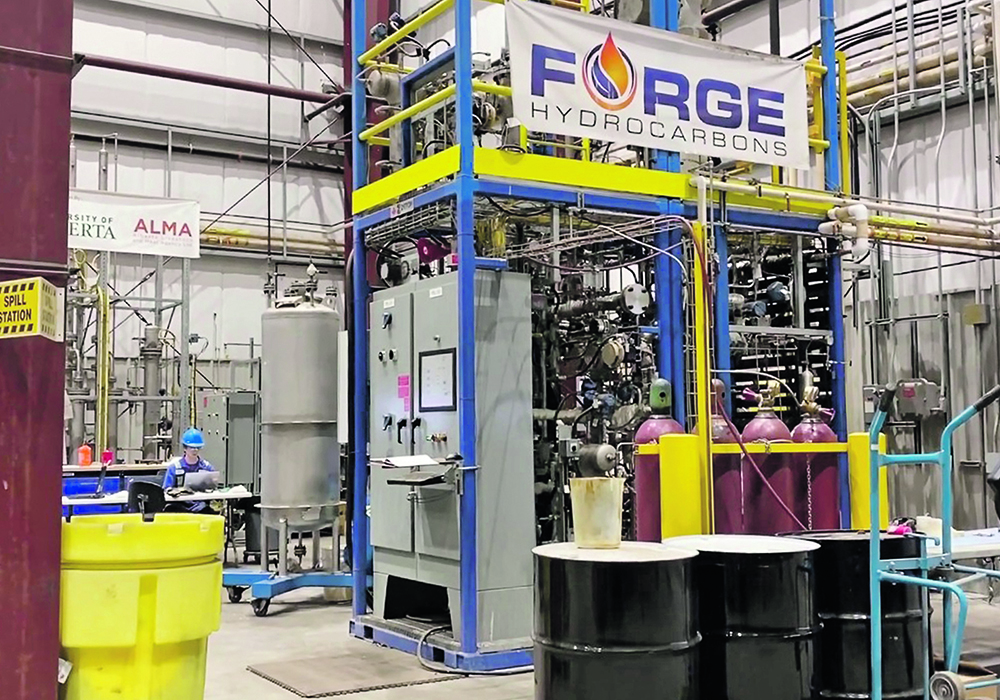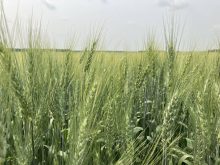The United States White House and three government departments are throwing their weight, and billions of dollars, at sustainable aviation fuel.
In early September, U.S. President Joe Biden, the U.S. Department of Agriculture and the departments of energy and transportation announced an ambitious “grand challenge” to replace fossil fuel in the aviation business with biofuels made from animal fat, vegetable oil, algae and other feedstocks.
“The challenge will adopt the goal of supplying at least 3.0 billion gallons of SAF (sustainable aviation fuel) per year by 2030,” the White House said in a Sept. 9 release.
Read Also

Farming Smarter receives financial boost from Alberta government for potato research
Farming Smarter near Lethbridge got a boost to its research equipment, thanks to the Alberta government’s increase in funding for research associations.
“By 2050, sufficient SAF to meet 100 percent of aviation fuel demand (in America), which is currently projected to be around 35 billion gallons per year.”
Right now, about 21 billion gallons of jet fuel is burned in America every year.
Airlines in the U.S. support the plan. Airlines for America, an industry group, also committed to three billion gallons of SAF by 2030.
Satisfying 100 percent of aviation fuel demand by 2050 will require tens of billions in investment and improved technologies, but it could be possible.
“Governments the size of the U.S. can make anything a reality, if they’re willing to put unlimited resources behind it,” said David Bressler, a professor in the Faculty of Agricultural, Life & Environmental Sciences at the University of Alberta.
“Technologically, economically, it’s probably feasible…. To me it’s an ambitious goal…. It would take a long-term dedication, through multiple (U.S.) administrations.”
Bressler is an expert in the technology of converting animal fats, vegetable oils and other natural feedstocks to chemicals and fuels.
He is also a key part of Forge Hydrocarbons, an Alberta company with patented technology to transform “waste fats and other low value organic oils into hydrocarbons that are indistinguishable from petroleum-based hydrocarbons, without any catalyst or hydrogen,” Forge’s website says.
In 2020, Shell announced an investment in Forge to build a $30 million biofuel plant in Ontario.
“Biofuels are critical in the move to lower-carbon marine, aviation and heavy-duty transport. Collaboration will be key to a successful energy transition and Shell’s investment in Forge to progress this commercial-scale project can help accelerate this technology,” said Andrew Murfin of Shell in a release.
Most of the media and the majority automobile manufacturers are focusing on electric vehicles as a path to reduce greenhouse gas emissions from transportation. But that option makes less sense for aviation, marine transport and rail.
“Electrifying those, on long distance transports, is a much bigger obstacle,” Bressler said. “Especially aviation. When (airlines) buy a plane it’s hundreds of millions of dollars and those engines are expected to run for 35 years to recoup the investment. They can’t really drop all the engines off the planes and retrofit them.”
That’s why governments, companies and scientists are attracted to sustainable aviation fuel.
Different technologies are in development, or already proven, but the basic idea is to produce a “drop in” renewable fuel that can completely replace petroleum-based jet fuel.
“You get a substantial carbon saving, having used the lipids (vegetable oils and animal fats),” Bressler said.
The Forge technology can reduce GHG emissions from aviation fuel by 85 percent. Other technologies offer reductions, but not as high as 85 percent.
Many refiners have relied upon animal fats and waste oils to make smaller quantities of sustainable jet fuel, but those sources aren’t economical for producing huge volumes.
That’s why the industry is turning to canola oil and soyoil to make SAF.
“The refiners need commercial quantities… of high quality oil,” said Ian Thomson, president of Advanced Biofuels Canada, an industry association.
If the U.S. sticks with its plan to produce three billion gallons of SAF by 2030, it should boost demand for canola and soyoil in North America, provided those commodities meet the greenhouse gas reduction goals in SAF programs.
In the longer run, perhaps 10 to 25 years, refiners may turn to other feedstocks, like algae, for producing SAF.
“It’s a few years (away), but you’re looking at large-scale fermenters or ponds… that convert sunlight into oils and fats,” Bressler said. “That gives you a direct way of using non-productive land to produce a bunch of oils and fats for industrial use.”
Canada hasn’t set a goal of 100 percent SAF by 2050, but the government has targets to reduce emissions and has sponsored a Green Aviation Fuels Innovation competition.
Forge Hydrocarbons is one of four finalists in the competition and the winner will be announced next spring.
Canada has a chance to become a world leader in the technology and production of SAF, because it has a massive supply of canola oil, abundant resources, a petro-chemical infrastructure and the know-how, Bressler said.
“I think we’re in a wonderful space…. We have technologies that are emerging and getting tens of millions of dollars in investment. And (we’re) really holding our own.”
But building the industry will require consistent government support. Federal and provincial governments must commit to a renewable fuels policy and stick to it. That sends a message to global firms and money managers that Canada is serious about sustainable jet fuel.
“When you’re are doing upgrading technologies or processing technologies, those investments are looking at 10, 15, 20 years,” Bressler said.
“Canada will have a role…. (But) if we’re not wise, we may end up as hewers of wood and drawers of water. And we’re just going to (export) raw commodities.”


















